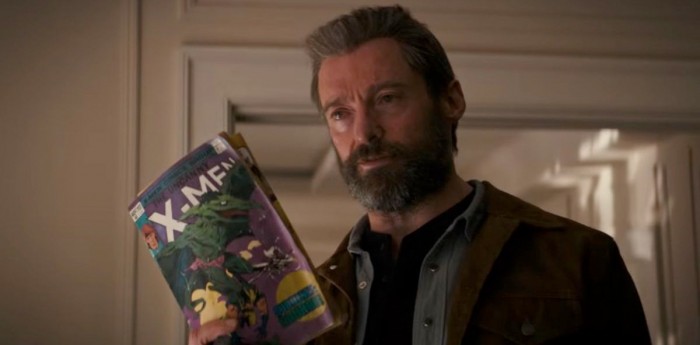Interview: 'Logan' Co-Writer Scott Frank Brings A Superhero Back To Reality
Right from the start of Logan, it's obvious James Mangold's film isn't your average superhero movie. Putting aside the R-rating the filmmaker doesn't waste, there's also the fact that comic book heroes rarely look as broken and feel as real as Hugh Jackman does in his final outing as the beloved mutant. The story isn't about a hero who saves the day; it's about a man who desperately needs saving.
The unconventional comic book movie, which is always more interested in its three central characters than hurrying up to the next set piece, is co-written by Mangold, Michael Green (American Gods), and Scott Frank. Frank is the writer behind two knockout Elmore Leonard adaptations, the director of The Lookout and A Walk Among the Tombstones, and the author behind Shaker.
We recently spoke with Frank about Logan, his novel, and more after he wrapped shooting his western Netflix series, Godless. We'll be sharing more from our conversation with the writer-director in the coming days, but in the meantime, you can read our spoiler discussion about Mangold's film below.
Note: We went from discussing how much more novels influence Frank's writing than movies, hence the first question.Were there any books you had in mind while writing Logan?Logan was an interesting thing because we had tried to do a lot of interesting things on the last Wolverine movie and were sort of thwarted by what was happening at the top of that studio at the time, which is no longer happening now. And so it ended up being pretty conventional in the end. I really was excited by the idea of taking a man who is immortal and has all these healing powers who suddenly is no longer immortal, and can kind of see his way into another life and has this respite. I kept thinking about the movie Witness, and Harrison Ford in Amish country, and only, you know, thinking about the Wolverine in Japan. And I thought, "Oh, it could be really cool," and do it under the guise of a samurai movie with all the attending codes. And there really is a western flavor to that. We were thinking a lot about Outlaw Josey Wales and some other things.
But it didn't work. When I came on to that job, I really ... The superhero genre is not my favorite genre. It's probably my least-favorite genre. All the movies are broad comedies or superhero movies now, it seems. And so I wasn't that interested, but Jim Mangold sent me a comic called "Old Man Logan," and I read [writer Mark Millar's] "Old Man Logan" and I kept saying, "Well, I'd love to do this, because this feels really, really interesting. This is out there." And it kind of stayed in my head, and that was really all.
Then with the second one, with Logan, I was again obsessed with not dealing with the superhero Marvel universe, any of that. Really what was interesting to me was dealing with him as a guy. As a guy whose sort-of father figure has Alzheimer's, and he's confronted with a younger version of himself. His whole life is one of regret that goes on for hundreds of years. Just all of this stuff that has nothing to do with having powers or not having powers but has to do with being a man. And again, identity and who he is and what he's leaving behind, and all those things we think about as we get older.
That all, I think it all goes back to "Old Man Logan." There were certainly movies that we were referencing and modeling, you know, all of which had been talked about. I also have a healthy sense of pulp, because I've read so much of that, and I think whenever I write dialogue in those kinds of things, rather than thinking about, you know, "The world is in trouble. Fight the Dark Side," all that crap which is non-dialogue, I would rather have him talk like he's in a kind of genre piece. A straight up genre movie. And the dialogue is much easier to write, and Logan, of all those characters, tends to fit that better than some of the others might.
The opening scene sets the tone for Logan. How did that opening come about?
Well, I told Jim from the beginning, because he ... I don't know where ... The opening involved something with Colonel Stryker and Logan being a mercenary dropped in to kill some guy and he's remembering this. I said, "You know, I've always wanted to write a James Bond movie where the beginning is in a pub in England somewhere, and Bond is drunk off his ass and he gets the shit kicked out of him by a bunch of soccer hooligans." I thought that would be a great way to open James Bond, and we sort of did that with Logan.
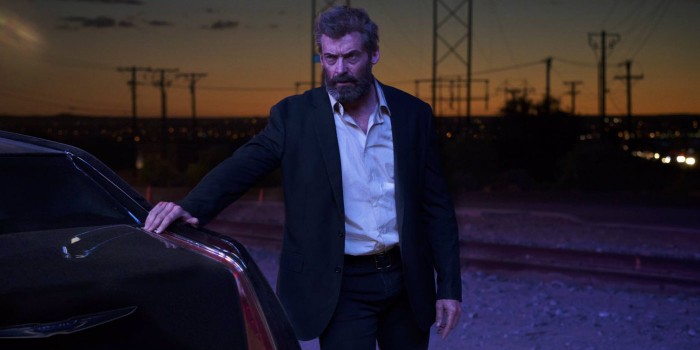 That's a great idea. Were there any other ideas you finally got to write with Logan?
That's a great idea. Were there any other ideas you finally got to write with Logan?
No, but we did this manifesto in two paragraphs on page two where we declared there's not going to be any kind of CG stuff in this. When people fall out of windows, they're going to feel it, and die. If something heavy falls on top of someone, chances are they're going to die. You know, all the violence, all the knifings, all that, you're going to feel it when you see it and when you read it. And Logan's not doing too well, as you may have noticed in this opening scene. He's drunk, he's bleeding, he's not in good shape. We declared ourselves up top, saying we're not going to write this as a normal superhero movie.
It feels uncompromised from the beginning.
Yeah, and that's ... And Jim, too, I mean Jim Mangold was very committed to adhering to that. The tone is tricky, and that's all the director. And he really, really worked hard to keep that consistent. And God bless the studio. You know, [Vice Chairman and President of Production] Emma Watts and [Chairman and CEO] Stacey Snider, they embraced this idea from the very beginning. It's a risky thing, and it's a violent, nasty bit of business. Jim always likes to talk about Little Miss Sunshine. I always like to talk about it as an ultra-violent Paper Moon.
[Laughs] Both those influences are definitely there.
Yeah, that's what I kept thinking about. You know, I think because everybody saw the same thing, that was helpful. And I came to this right after I finished the book. Right after the book, so I still had a lot of energy. And then he went off to make Logan, and I went off to go make Godless, so we kind of disappeared for a while from each other.
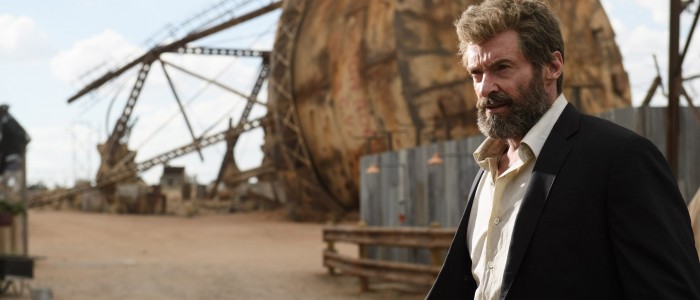 With scene at the hotel where everyone is suffering from paralysis and Logan is trying to get to Xavier and Laura (Dafne Keen), how detailed on the page were you with that sequence? What did you all want that sequence to accomplish?
With scene at the hotel where everyone is suffering from paralysis and Logan is trying to get to Xavier and Laura (Dafne Keen), how detailed on the page were you with that sequence? What did you all want that sequence to accomplish?
We were very detailed on the page with the action with that one. You know, it was always going to be ... There was a couple moments that feel like respite that turn into sort of horror, and that was one of them. There are all sorts of purposes that are served by that sequence, and one is she connects with Charles and the whole moment watching Shane, and kind of thinking about a morality that's never been presented to her before. All of that was a big part of it, but as that's happening, you have the whole bit with Logan finding the comic books and realizing that a lot of her thinking has its source to these comic books, which he believes are garbage.
And then leaving them alone, leaving the two of them alone while he goes off and gets the car, all of that became tricky to keep it moving forward while we're shifting gears. Because they've just escaped, they had that whole thing on the run, it turns out who Laura is, and now you need to sort of shift the movie into another place. The idea of them finding them at the hotel was always a way to really up the tension, and it felt like a really interesting set piece that we set up earlier at the smelting plant, or what was a refinery once upon a time, where you see a little mini version of what Charles can do. You needed to demonstrate what he could do to sort of explain, to hint at what might have happened in the past.
Kind of a longwinded answer, I know, but there so many factors that go into those kinds of sequences that it gets built brick by brick, and you keep adding things to it and taking away things. There used to be flashbacks intercut with the stuff in the casino and then we didn't like that. You're always trying things in the script and experimenting, and that whole area was doing a lot of work for us, story-wise.
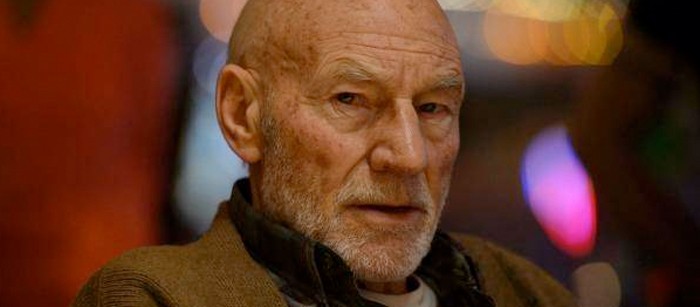 When Charles talks about the night he's had in the Munson's home and his past, his one line about feeling bad for enjoying himself tells you all you need to know about his incident.
When Charles talks about the night he's had in the Munson's home and his past, his one line about feeling bad for enjoying himself tells you all you need to know about his incident.
That's it.
Was a flashback ever considered, though?
Again, I don't know what other versions were because these scenes are all evolution. You know, you're kind of trying, how far do you go? How much does Charles say? How far do you go between the son and Laura? You know, what is that scene going to be? And we tried all different kinds of versions where there was a little more time between her and the young girl and the young boy there. It's always a balancing act, and you just go back over it and back over it until you feel it's right. Then there's what happens on the day, when you're shooting, when Jim is standing there listening to the actors and realizing, "Oh, I don't need this, or I don't need that, they just did that with a look," or maybe "We need a little more to explain." You know, I find it more of an evolution.
Sometimes there are great stories about "it was supposed to be this or supposed to be that," but I felt like the way this came together because it moved so fast ... We started, I want to say in March, and then they were shooting a year later. We were writing into the fall, and then I left, and Jim went off in January to start production. So it was less than a year before they started production, because we started on page one in March, as I recall, is when I finished the book, maybe April. And lots of conversations with Hugh. And it came together so fast, so I don't know that we tried lots of different versions, but there was a ton of rewriting. There always is. And so we would go back and forth, and then when Jim was out there shooting, he was doing still more work while he was shooting.
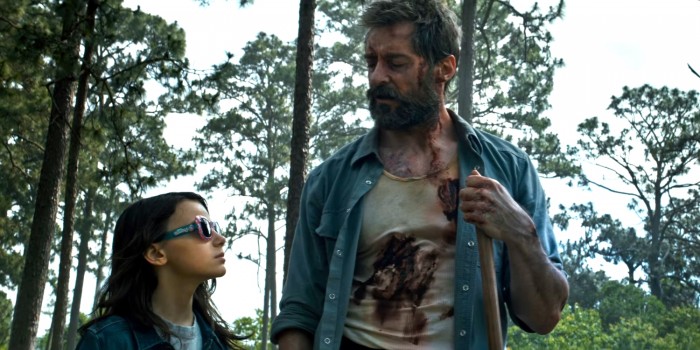 Was there a lot of back and forth over how much the audience needed to know about Laura's past in the iPhone video?
Was there a lot of back and forth over how much the audience needed to know about Laura's past in the iPhone video?
We thought that was a place where we need to give a lot of exposition because you need to feel sorry for this girl. You need to look at this girl in a different way, because our whole concept for her is that she starts out feral and you think she's just this feral creature, a lethal creature, and then what you see is how smart she is as time goes on. She's very, very smart. In that sequence, there's so much information there that just sets up the world, sets up what's happening.
It gives a slight nod to the various other things that were happening in the Logan world in the past, but for the most part, it made you feel for these kids. And it established these kids so that later, once you start saying their names and so on, that there would be this other world that we had to have that we could pay off later. It was a pretty important thing and tricky to do in a video.
How was it writing Pierce?
I could write scenes with Pierce all day long, just his dialogue and the kind of guy he is. We just ended up cutting it down. There was probably more, I'm sure. But you know, we had all kinds of stuff with him and how he's introduced, and Logan's first meeting and conversations with Logan, because I could write those two chatting forever. I just loved their dialogue. It was really fun to write.
Boyd Holbrook is so charismatic in that role.
Who was in A Walk Among the Tombstones, by the way.
That's right. He transforms himself from role to role.
Boyd is ... Well, he plays a drug addict [in A Walk Among the Tombstones], and in this, he's this perfectly confident, cool ... Boyd is a tremendous actor. I mean, those kinds of scenes are pulpy, and they're fun to write, and there's natural conflict there. They're both interesting guys, and the big thing that we were kind of getting a kick out of was that Pierce is a fan of the Wolverine. We thought that would be really fun.
And he's very sincere about it.
He's very sincere. He's very sincere.
***
Logan is now in theaters.

